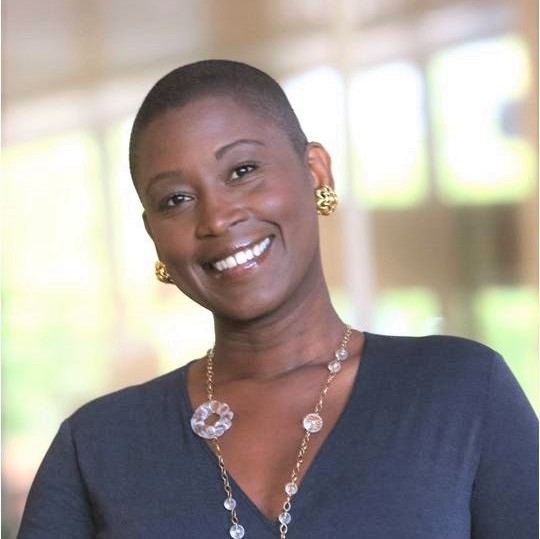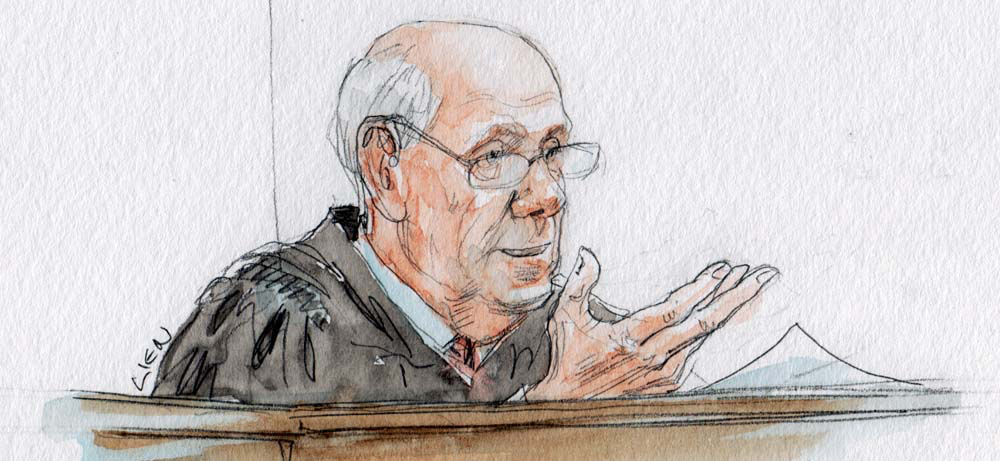SYMPOSIUM
Justice Breyer: A formidable defender of reproductive rights

on Feb 17, 2022 at 10:37 am

This article is part of a symposium on the jurisprudence of Justice Stephen Breyer.
Michele Goodwin is a chancellor’s professor at the University of California, Irvine, and the author of Policing the Womb: Invisible Women and the Criminalization of Motherhood.
Justice Stephen Breyer’s retirement from the Supreme Court at the end of this term will mark the end of an era. Both he and Justice Ruth Bader Ginsburg — who untimely passed early in the 2020-21 term — shared similar ideological perspectives, approaches to judicial review, and paths to the Supreme Court. Both justices were appointed in the same year to federal circuit courts of appeals in 1980 by President Jimmy Carter. Later, both received nominations to the Supreme Court by President Bill Clinton — Ginsburg in 1993 and one year later, almost to the day, Breyer, sworn in on Aug. 3, 1994.
Together, Breyer and Ginsburg shaped the court’s jurisprudence on reproductive rights in the era after Planned Parenthood v. Casey. Both defenders of abortion rights, Breyer authored analytically rich majority opinions in Stenberg v. Carhart, Whole Woman’s Health v. Hellerstedt, and June Medical Services v. Russo, protecting abortion rights, while Ginsburg penned nuanced concurrences, as well as rigorous dissenting opinions in cases diluting or threatening reproductive liberties, such as Gonzales v. Carhart, Burwell v. Hobby Lobby Stores, and notably shortly before her death, Little Sisters of the Poor Saints Peter and Paul Home v. Pennsylvania.
Even though Breyer and Ginsburg were contemporaries who shared similar ideological views on the substantive questions related to reproductive privacy, their jurisprudence cannot be conflated or reductively framed as being of one voice. One might say that Breyer wrote for today and Ginsburg preserved the records for the future — a jurisprudence in exile. For example, it is worth noting that Breyer’s commitment to judicial independence is reflected in cases where he and Ginsburg parted ways, such as in Little Sisters, as well as where they agreed, such as in Stenberg v. Carhart, where he wrote the majority opinion and Ginsburg penned a concurrence.
A close reading of Stenberg v. Carhart, a 5-4 decision in 2000, underscores this point. In that case, Breyer led the majority in striking down a Nebraska criminal statute that made it unlawful to perform dilation-and-evacuation and similar abortion procedures even though the risks of mortality and morbidity to the pregnant person are significantly lower than induced-labor procedures. Breyer framed the question as whether the law violated the “Federal Constitution as interpreted in Planned Parenthood v. Casey and Roe v. Wade” and concluded that it did for two clear, independent reasons. First, the law made no “exception for the preservation of the … health of the mother.” Second, Breyer explained that the law imposed “‘an undue burden on a woman’s ability’ to choose” abortion.
Breyer is meticulous, combing through the district court record, elevating empirical data, canvassing science, and interrogating the legal standards applied by the lower court. Like Justice Harry Blackmun before him, he centered how such laws will ultimately impact the lives and constitutional rights of pregnant persons, explaining, “[f]irst, before ‘viability … the woman has a right to choose to terminate her pregnancy,’” and “[s]econd, ‘a law designed to further the State’s interest in fetal life which imposes an undue burden on the woman’s decision before fetal viability’ is unconstitutional.” He punctuated these principles by explaining that “[a]n undue burden is shorthand” for state regulations that have “the purpose or effect of placing a substantial obstacle in the path of a woman seeking an abortion of a nonviable fetus.” This opinion epitomizes Breyer’s thoughtful but arguably safe approach to reproductive rights, relying on precedent, and like a professor, mounting evidence to support the ultimate conclusion.
By subtle contrast, Ginsburg, in her Stenberg v. Carhart concurrence, reminded the court — and arguably all people concerned about protecting reproductive rights — that for “all the emotional uproar” and handwringing involved with the Nebraska law, the court “should not lose sight of the character of Nebraska’s” law. In other words, the law was not about fetal health, safety, or termination — and certainly not about protecting women’s health — but ultimately sought “to chip away at the private choice shielded by Roe v. Wade.” Where Breyer interpreted Planned Parenthood v. Casey’s primary holding to apply to the Nebraska law, Ginsburg foreshadowed states enacting various restrictive laws to undermine abortion rights (under the proxy of protecting fetal health) — a foreshadowing that has come to fruition.
That said, Breyer’s reproductive rights jurisprudence will be most associated with his compelling, even masterful, 5-3 opinion in Whole Woman’s Health v. Hellerstedt, which struck down two Texas anti-abortion provisions. The case must be understood in context: Even while a vast majority of Americans support the right to terminate a pregnancy, between 2011 and 2013 more anti-abortion laws were enacted at the state level than in all the years a decade before — combined.
Whole Woman’s Health v. Hellerstedt concerned the constitutionality of an “admitting-privileges requirement” that mandated “[a] physician performing or inducing an abortion … must, on the date the abortion is performed or induced, have active admitting privileges at a hospital that … is located not further than 30 miles from the location at which the abortion is performed or induced” and a “surgical-center requirement,” which provided that “an abortion facility must be equivalent to the minimum standards … [required for] ambulatory surgical centers.”
As in Stenberg, Breyer canvased medical studies, scrutinized the district court’s fact-finding, reviewed and cited medical studies, and grounded the decision in holdings from Casey and Roe v. Wade. He noted, “[i]n Casey, for example, we relied heavily on the District Court’s factual findings and the research-based submissions of amici in declaring a portion of the law at issue unconstitutional.” In Whole Woman’s Health v. Hellerstedt, Breyer again gave considerable weight to the district court’s fact-finding, explaining “that the Court retains an independent constitutional duty to review factual findings where constitutional rights are at stake.” Like Blackmun in Roe v. Wade, Breyer explained the grave harms that would materialize if the Texas laws were allowed to take effect, including the closure of the few remaining abortion clinics in the state, the “particularly high barrier[s] for poor, rural, or disadvantaged women,” and the high risks of morbidity and mortality. It is worth noting that in this case, Justice Anthony Kennedy joined the liberals on the court.
The case established an important precedent that Breyer in a few short years would return to in June Medical Services v. Russo, striking down a near verbatim abortion provision requiring that doctors obtain admitting privileges as a condition to perform abortions in Louisiana. In that case, Chief Justice Roberts joined the liberals in voting to strike down the requirement.
Breyer will be remembered for judicial independence while serving on the court, a meticulous approach to analyzing the record and drafting opinions, and a commitment to stare decisis, consistently drawing upon well-established principles. For example, on matters related to reproductive rights, he consistently turned to Planned Parenthood v. Casey and Roe v. Wade to inform his jurisprudence. By doing so, he drew a bridge with Kennedy and Justice Sandra Day O’Connor — the two Republican appointees who for years were the court’s swing justices. Notably, both Kennedy and O’Connor signed on to Breyer’s opinions in cases addressing abortion rights.
Breyer retires at a critical moment in the court’s history; a time marked by pronounced ideological shifts on the court, serious threats to reproductive liberties at the state level, and an evident desire among conservatives on the court to dismantle the core holding of Roe v. Wade. After oral argument in Dobbs v. Jackson Women’s Health Organization in December, the future of Roe v. Wade is not certain.
Yet, Breyer’s legacy will reach beyond his jurisprudence. His retirement also sets the stage for what will be a monumental, historical first in the court’s 233-year history. Breyer’s retirement presages the nomination of the first Black woman to serve on the court and to assume the seat that he will vacate. Future historians may credit the nomination and, if confirmed, the first Black woman on the United States Supreme Court, to President Joe Biden for fulfilling a campaign promise. However, it is worth considering how this moment also reflects Breyer’s independence, leadership, and philosophy. His retirement makes room for Biden’s nomination. As such, he builds another bridge and dismantles a long-standing barrier that has existed since the Supreme Court’s establishment in 1789.
Breyer leaves behind a storied and important legacy while paving the way for a new era on the Supreme Court.


